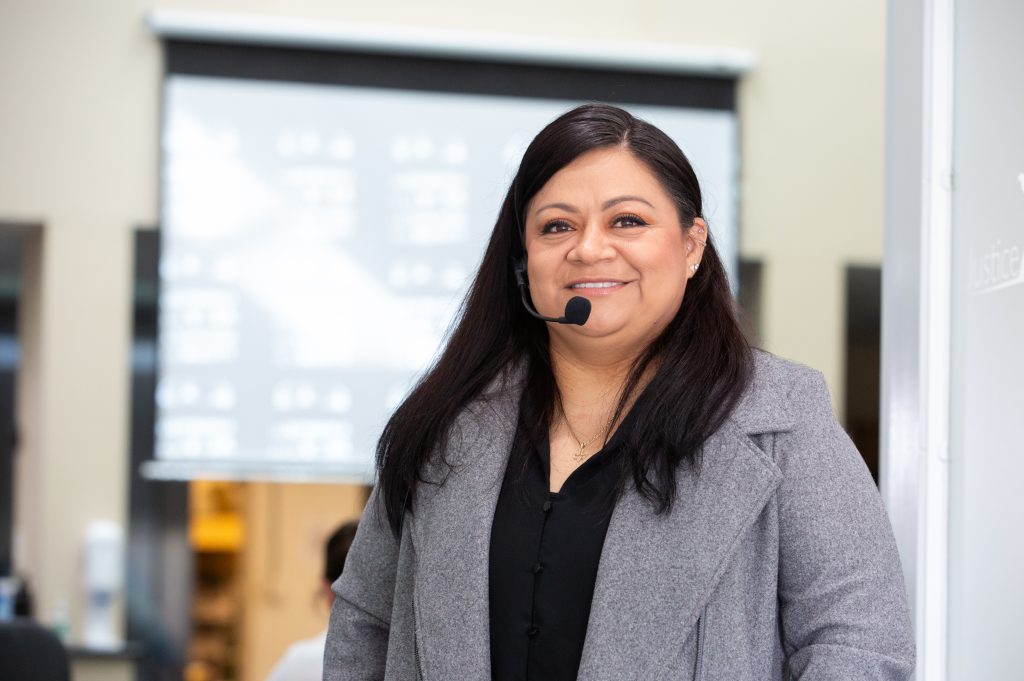A translator/interpreter hones her strengths to finds new job opportunities

Maria Trujillo originally wanted a career in social work but, after receiving her bachelor’s degree, realized it was not the right fit.
The 43-year-old, originally from Mexico, has lived in the United States since she was in the third grade. As a bilingual speaker, she decided to use her linguistic strengths to work as a translator/interpreter. In this role, Trujillo interprets both the written and spoken word, respectively, from one language to another.
Soon after she started translating professionally, however, Trujillo realized she needed more formal training if she was going to succeed.
“I started doing board event meetings and nonprofit work, but I didn’t know any of the protocols,” Trujillo says. “I didn’t know any of the rules.”
“That [certificate] opened up a lot of doors for me; I started getting hired left and right.”
Mariella Trujillo, Translator/Interpreter, Fontana Adult School
She soon found those guidelines in Fontana Adult School’s (FAS) interpreter/translator pathway.
“[Fontana] had this course for interpretation and translation, and I said, ‘Oh, that’s what I need,’” Trujillo says. “That’s where I got all the do’s and don’ts and all the different types of interpretation.”
A two-semester program, the translation/interpretation pathway covers a variety of distinct aspects of the profession, which includes the difference between translation and interpretation and the different types of interpretation.
The courses also showed her how many different career opportunities there were for a trained translator. Students who complete the translation/interpretation pathway have gone on to find jobs in law, medicine, and social work, among others. Trujillo says the main types of interpretation she found the most valuable included site, simultaneous and consecutive interpretation.
Simultaneous interpretation involves an interpreter interpreting for a speaker as they speak, while a consecutive interpreter waits for a person to finish speaking before giving the interpretation. A site interpreter is given a document and a set amount of time to look at said document before giving their interpretation.
Trujillo completed her time at the Fontana Adult school in 2020 and says she highly recommends the school to anyone looking to enroll—though she advises those students that they will need continue to work hard even after they complete their respective pathways.
“You can’t ever stop,” Trujillo says. “The program is like an intro to interpretation and translation, but obviously it’s not all of it and it’s not all the answers. You have to just keep learning.”
Since leaving the school, Trujillo has started her own translation interpretation business, an even purchased her own home earlier this year.
She credits much of this success to her time at Fontana, and specifically to the bilingual proficiency certification she earned as part of the translation interpretation pathway.
“That little paper opened up a lot of doors for me,” Trujillo says. “Because of that I started getting into more community spaces and started getting hired left and right.”
For more information on Fontana Adult School visit: https://adultschool.fusd.net/
Written by Jacob Peterson
| Regions | Classes & Topics |
|---|---|
| Southern California | English as a Second Language |